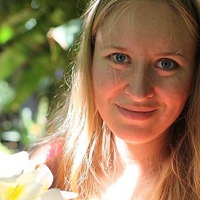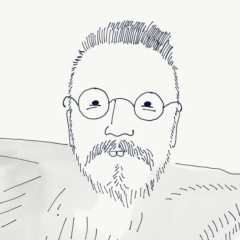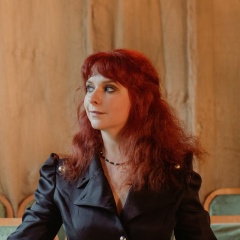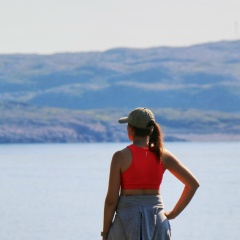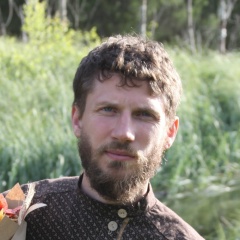Вьетнам, как ни старается, место в рейтинге любимых стран, конечно, не займёт. Он даже вряд ли может претендовать на то, что я захочу его посетить дважды. А дело вот в чем:
На первый взгляд, это обычная азиатская страна с некоторыми, отличающими её от соседок, особенностями.
Здесь примерно в два раза дешевле, чем в Тайланде, и это очевидный плюс.
Туристов манят сюда дешевый шоппинг, еда и всякие там пляжи-массажи.
Так же здесь бесконечное количество доступной экзотики: жареные-пареные крокодилы, лягушки, питоны, страусы. Супы из голубей и из любых ползучих тварей. Можно удивлять себя каждый день, и все равно все не перепробуешь.
Но все это перечёркивается одним жирным минусом- здесь просто невообразимо грязно. Кажется, что мусор со всего земного шара свозится сюда и размазывается ровным слоем вдоль дорог и жилых домов. Но это, конечно, не так, мы проверяли. Там, где заканчиваются деревни и начинаются плантации плодовых деревьев, там где десятками километров не встретишь ни одной живой вьетнамской души, там не увидишь и мусора.
Дом среднестатистического вьетнамца выглядит так: одноэтажная бетонная коробка, покрытая крышей с тяжелой черепицей. (Здесь сильные ветра, а со стройматериалом проблем нет- вокруг один песок, можно не экономить). В зависимости от благосостояния вьетнамца, дом может разрастаться вширь и ввысь, обзаводясь различными пристройками, которые я назову просто - хозблок.
Прямо перед домом будет брошена куча не пригодившегося стройматериала: початый мешок щебня, прутья арматуры, битый кирпич.
Немного ближе к дому - куча гниющего мусора: пищевые отходы, банки-склянки, etc...
Где-то в промежутке между этими двумя кучами возятся дети, ковыряются в мусоре долговязые петухи, растит своё потомство очередной симпатичный бобик.
Но! Главная деталь! Посередине этого всего великолепия обязательно должен красоваться гамак! Для отдыха! И там, не сомневайтесь, вы легко найдёте хозяина дома, если решите заглянуть в гости.
С любовью и вожделением вьетнамцы обихаживают только плантации питахайи и других, приносящих доход, растений. Вот там вы не найдёте ни бумажек, ни гамаков.
Справедливости ради, надо сказать, что все же те, кто в гамаках, живут похуже тех, кто держит плантации.
Ну а мы сегодня сдали свой байк, так как завтра переезжаем в Ньячанг.
Путешествие продолжается !
На первый взгляд, это обычная азиатская страна с некоторыми, отличающими её от соседок, особенностями.
Здесь примерно в два раза дешевле, чем в Тайланде, и это очевидный плюс.
Туристов манят сюда дешевый шоппинг, еда и всякие там пляжи-массажи.
Так же здесь бесконечное количество доступной экзотики: жареные-пареные крокодилы, лягушки, питоны, страусы. Супы из голубей и из любых ползучих тварей. Можно удивлять себя каждый день, и все равно все не перепробуешь.
Но все это перечёркивается одним жирным минусом- здесь просто невообразимо грязно. Кажется, что мусор со всего земного шара свозится сюда и размазывается ровным слоем вдоль дорог и жилых домов. Но это, конечно, не так, мы проверяли. Там, где заканчиваются деревни и начинаются плантации плодовых деревьев, там где десятками километров не встретишь ни одной живой вьетнамской души, там не увидишь и мусора.
Дом среднестатистического вьетнамца выглядит так: одноэтажная бетонная коробка, покрытая крышей с тяжелой черепицей. (Здесь сильные ветра, а со стройматериалом проблем нет- вокруг один песок, можно не экономить). В зависимости от благосостояния вьетнамца, дом может разрастаться вширь и ввысь, обзаводясь различными пристройками, которые я назову просто - хозблок.
Прямо перед домом будет брошена куча не пригодившегося стройматериала: початый мешок щебня, прутья арматуры, битый кирпич.
Немного ближе к дому - куча гниющего мусора: пищевые отходы, банки-склянки, etc...
Где-то в промежутке между этими двумя кучами возятся дети, ковыряются в мусоре долговязые петухи, растит своё потомство очередной симпатичный бобик.
Но! Главная деталь! Посередине этого всего великолепия обязательно должен красоваться гамак! Для отдыха! И там, не сомневайтесь, вы легко найдёте хозяина дома, если решите заглянуть в гости.
С любовью и вожделением вьетнамцы обихаживают только плантации питахайи и других, приносящих доход, растений. Вот там вы не найдёте ни бумажек, ни гамаков.
Справедливости ради, надо сказать, что все же те, кто в гамаках, живут похуже тех, кто держит плантации.
Ну а мы сегодня сдали свой байк, так как завтра переезжаем в Ньячанг.
Путешествие продолжается !
Vietnam, no matter how hard it tries, of course, will not occupy a place in the ranking of favorite countries. He can hardly claim that I want to visit him twice. And the thing is:
At first glance, this is a common Asian country with some features that distinguish it from its neighbors.
It is about two times cheaper than in Thailand, and this is an obvious plus.
Tourists beckon here cheap shopping, food and all sorts of beaches, massages.
There is also an infinite amount of available exotic: fried-steamed crocodiles, frogs, pythons, ostriches. Soups from pigeons and from any creeping creatures. You can surprise yourself every day, and still you will not try everything.
But all this is crossed out by one bold minus, here it is simply unimaginably dirty. It seems that the garbage from around the globe is brought here and smeared evenly along the roads and houses. But this is certainly not the case, we checked. Where the villages end and the plantations of fruit trees begin, where tens of kilometers you will not meet a single living Vietnamese soul, you will not see any garbage there.
The average Vietnamese house looks like this: a single-story concrete box covered with a roof with heavy tiling. (There are strong winds here, and there are no problems with building materials - there is no sand around, you can not save). Depending on the well-being of the Vietnamese, the house can grow in breadth and height, acquiring various extensions, which I would call simply - a building block.
Directly in front of the house will be thrown a heap of useless building materials: a peeled bag of rubble, bars of reinforcement, broken bricks.
A little closer to the house - a bunch of rotting garbage: food waste, jars, bottles, etc ...
Somewhere in the gap between these two heaps, children are messing around, lanky roosters poking around in the trash, another cute little Bobby is raising its progeny.
But! Main detail! In the middle of all this magnificence must necessarily show off a hammock! For relax! And there, do not hesitate, you will easily find the master of the house, if you decide to look for a visit.
With love and lust, the Vietnamese are planted only by pitahaya plantations and other income-producing plants. There you will not find any papers or hammocks.
In fairness, I must say that all those who are in hammocks, live worse than those who keep the plantation.
Well, today we gave up our bike, as we are moving to Nyachang tomorrow.
The journey continues!
At first glance, this is a common Asian country with some features that distinguish it from its neighbors.
It is about two times cheaper than in Thailand, and this is an obvious plus.
Tourists beckon here cheap shopping, food and all sorts of beaches, massages.
There is also an infinite amount of available exotic: fried-steamed crocodiles, frogs, pythons, ostriches. Soups from pigeons and from any creeping creatures. You can surprise yourself every day, and still you will not try everything.
But all this is crossed out by one bold minus, here it is simply unimaginably dirty. It seems that the garbage from around the globe is brought here and smeared evenly along the roads and houses. But this is certainly not the case, we checked. Where the villages end and the plantations of fruit trees begin, where tens of kilometers you will not meet a single living Vietnamese soul, you will not see any garbage there.
The average Vietnamese house looks like this: a single-story concrete box covered with a roof with heavy tiling. (There are strong winds here, and there are no problems with building materials - there is no sand around, you can not save). Depending on the well-being of the Vietnamese, the house can grow in breadth and height, acquiring various extensions, which I would call simply - a building block.
Directly in front of the house will be thrown a heap of useless building materials: a peeled bag of rubble, bars of reinforcement, broken bricks.
A little closer to the house - a bunch of rotting garbage: food waste, jars, bottles, etc ...
Somewhere in the gap between these two heaps, children are messing around, lanky roosters poking around in the trash, another cute little Bobby is raising its progeny.
But! Main detail! In the middle of all this magnificence must necessarily show off a hammock! For relax! And there, do not hesitate, you will easily find the master of the house, if you decide to look for a visit.
With love and lust, the Vietnamese are planted only by pitahaya plantations and other income-producing plants. There you will not find any papers or hammocks.
In fairness, I must say that all those who are in hammocks, live worse than those who keep the plantation.
Well, today we gave up our bike, as we are moving to Nyachang tomorrow.
The journey continues!






У записи 39 лайков,
0 репостов,
937 просмотров.
0 репостов,
937 просмотров.
Эту запись оставил(а) на своей стене Ирина Мешалкина







































